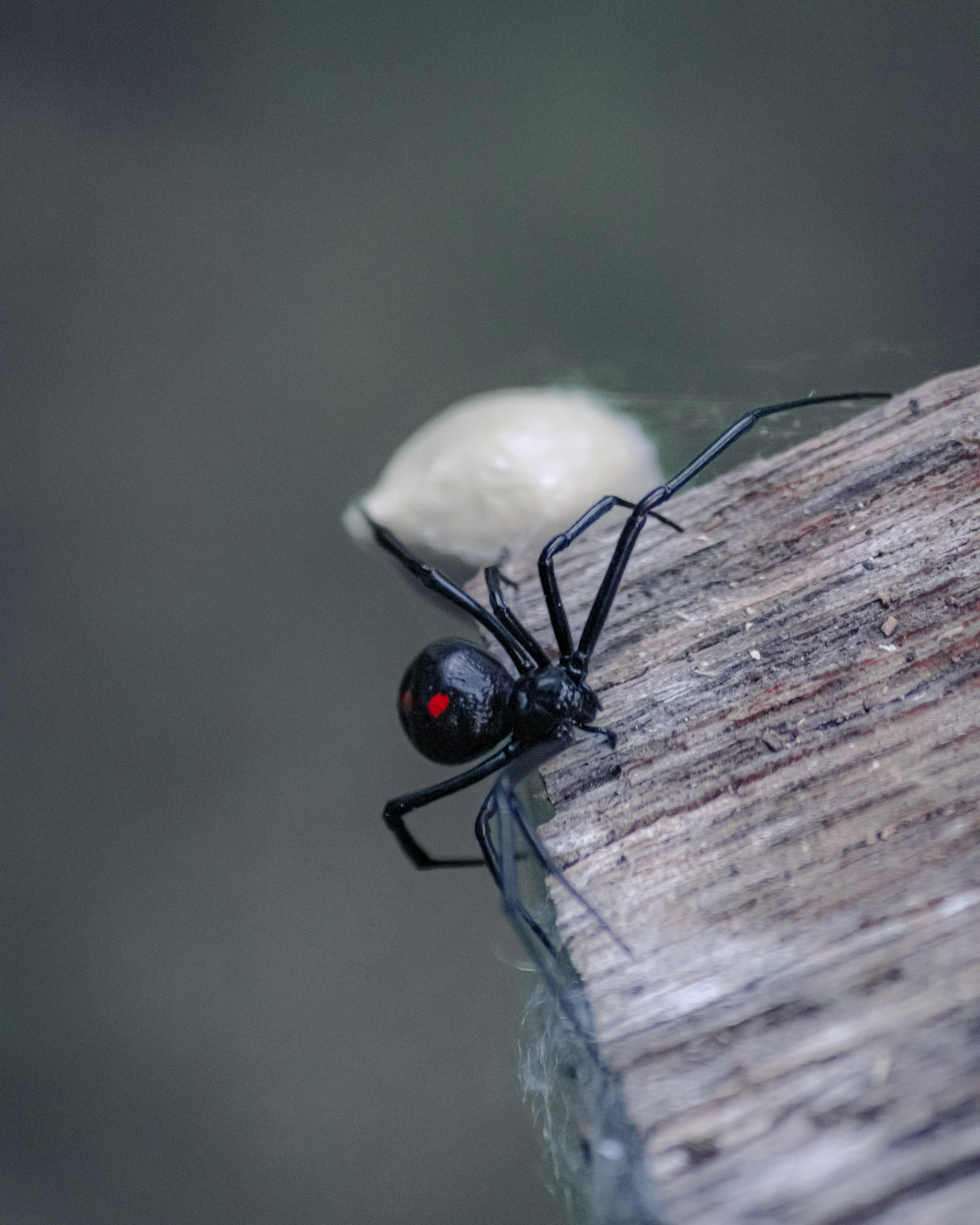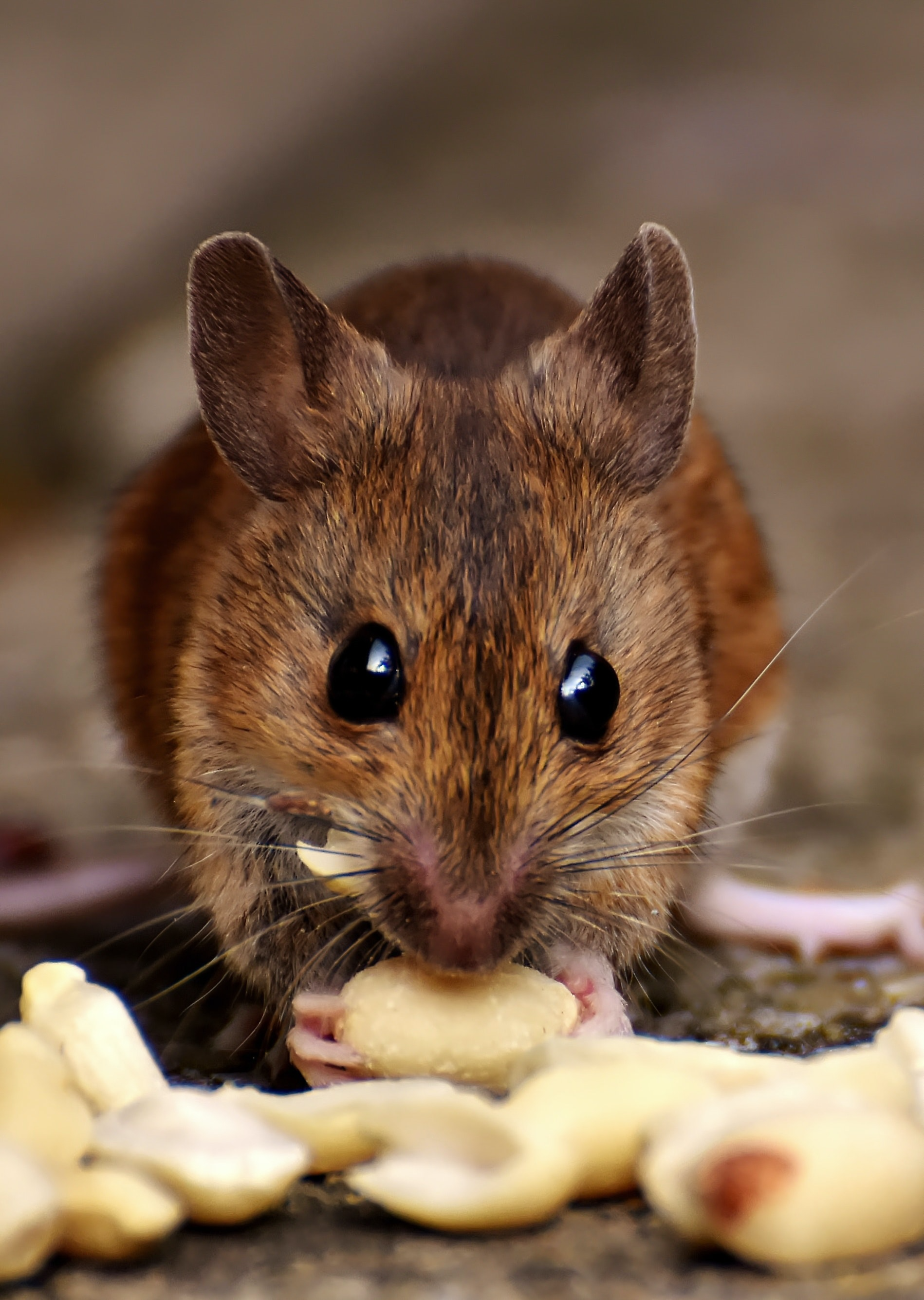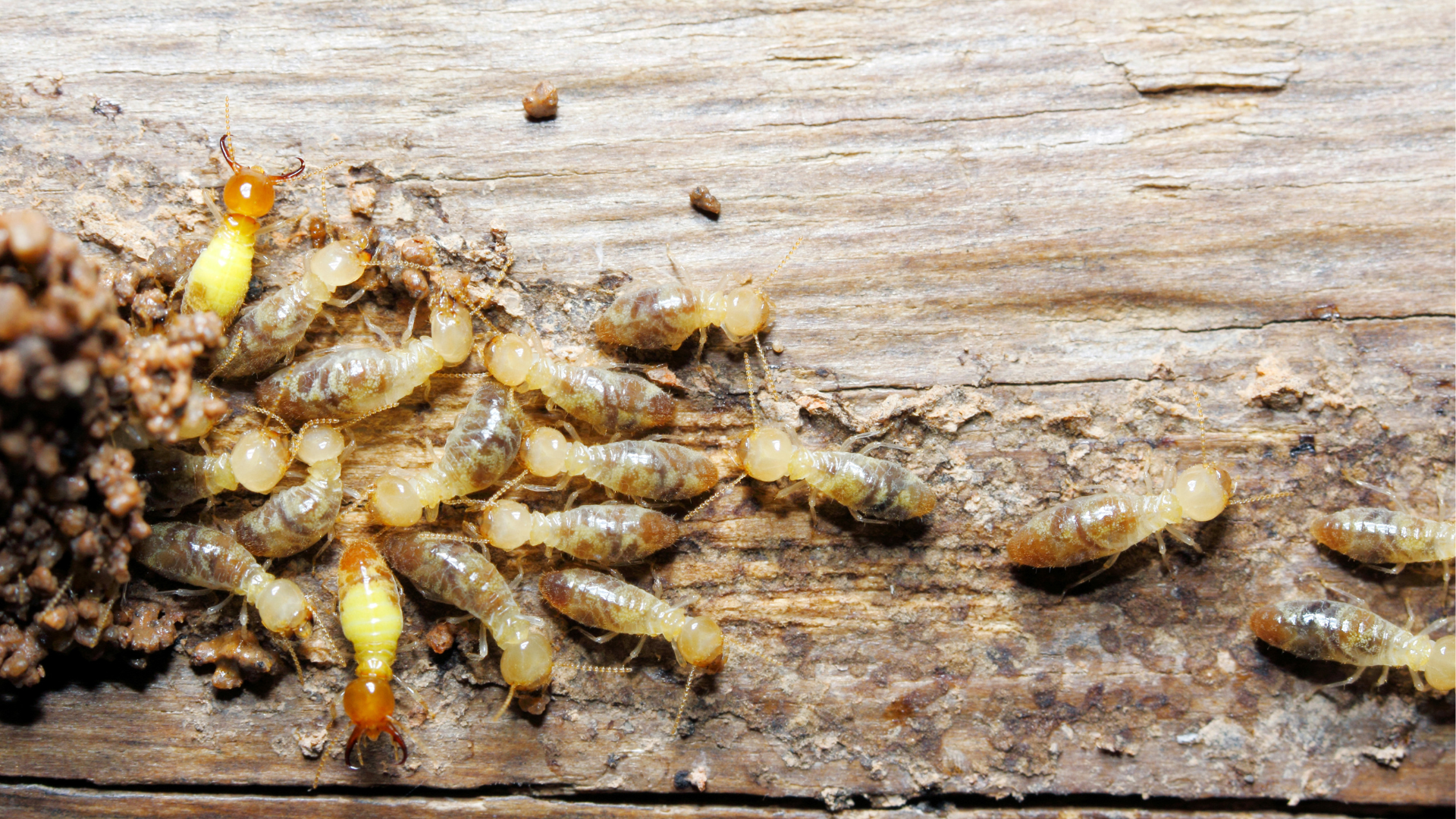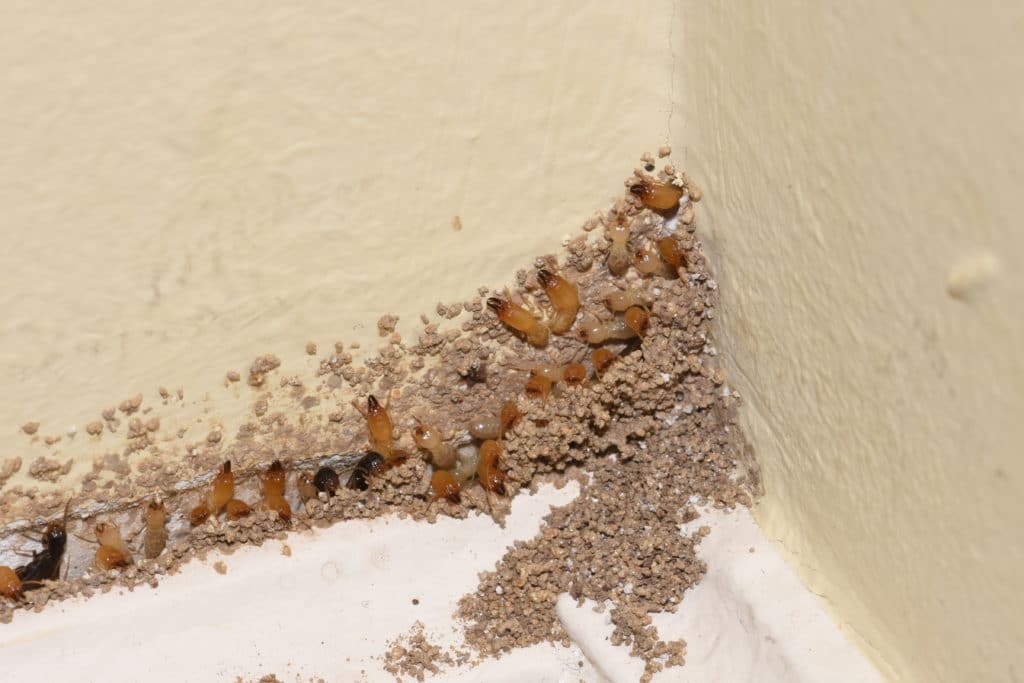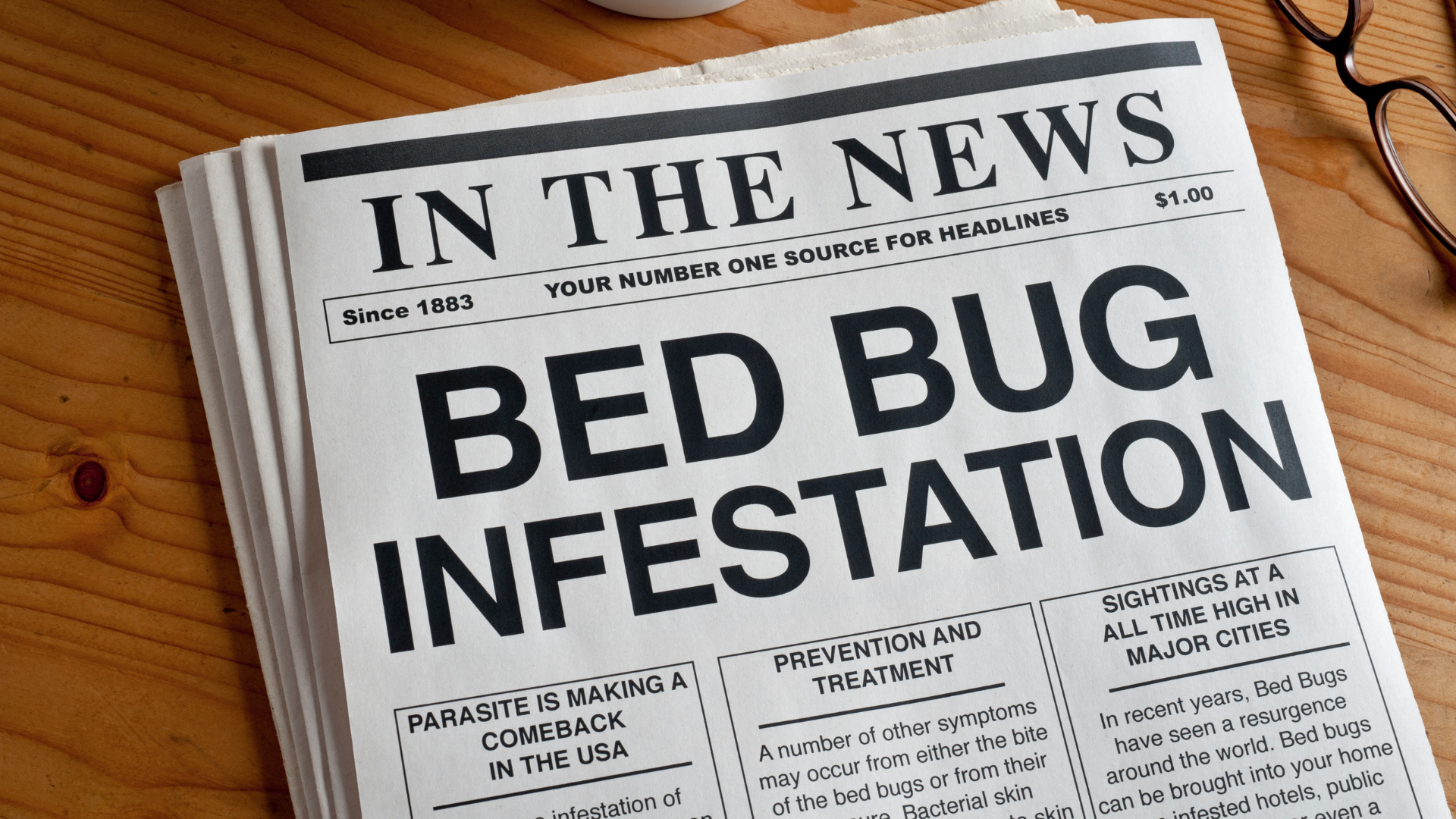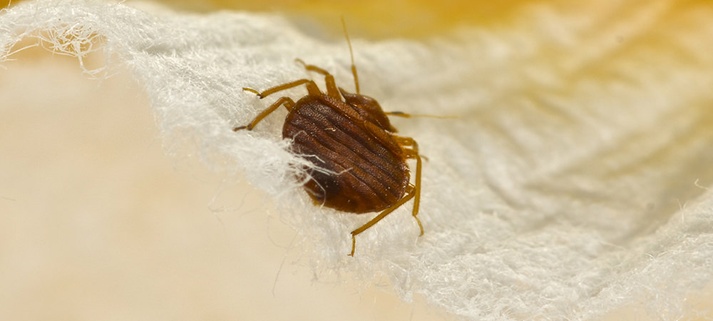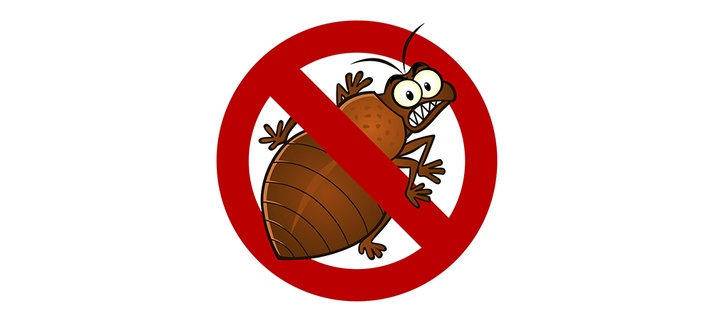12 Types of Spiders in New Jersey | Which Ones Are Dangerous?
Due in part to its incredibly variable topography–including a wide array of old architecture and lush green landscape–New Jersey is home to several species of insects, arachnids, and other wildlife. Sometimes, these critters can find their way into areas where they aren’t readily welcome, such as your home, garage, basement, or shed.
While it’s common to see a bed bug infestation, you may be alarmed to find a spider infestation in your house. While spiders typically indicate the presence of other pests, they can be a pesky pest in and of themselves.
In this article, we’ll dig into Garden State’s most commonly observable spider species, fleshing out their common identifiers, habits, favorite hiding places, and whether or not you should be concerned about their presence in your home.
Common House Spiders
As the name suggests, these spiders primarily like to inhabit human dwellings, such as houses, apartment buildings, office buildings, and other structures typically inhabited by people.
Visually, common house spiders have a body shape reminiscent of a widow; however, they range from brown to black in color and may have various markings, making them a bit difficult to identify. In addition, females range from 5 to 6 mm, while males average between 3.8 and 4.7 mm.
Like widows, common house spiders rely on neurotoxic venom. Fortunately, the venom is far less dangerous than widow spiders, and their bite is generally harmless to humans.
American Grass Spiders
Second on the list is the American grass spider. You can identify these spiders by their large, horizontal webs found in the grass in your yard. However, these spiders use their web to catch prey; instead, they’re hunting spiders that use their incredible speed to attack prey.
Visually, these spiders are very easy to identify due to their large size (growing up to 20mm in length), brown body color, dark-brown-banded legs, stripes down their cephalothorax, and three rows of eyes.
Overall, American grass spiders are not toxic to humans. Like most spiders, their venom isn’t strong enough to cause serious health risks, though minor irritation, pain, and redness may be present around the bite.
Cross Orb Weavers
The cross orb weaver–also known as the pumpkin or European garden spider–is a member of the orb weaver family commonly found in New Jersey. While you won’t likely find this spider in your home, the cross orb weaver can commonly be found in gardens and foliage across the state, poised in the middle of its large, ornate, orb-shaped web.
The cross orb weaver is identifiable by its bulbous abdomen and large overall size, growing up to 20mm in length. Colors can vary from light yellow to gray, and white markings are almost always present on the dorsal side of the abdomen.
These spiders tend to be rather shy, only biting when feeling trapped or threatened. On the off chance you receive a bite, symptoms are generally limited to localized redness and irritation.
Hacklemesh Weavers
Hacklemesh weavers are frequently found in damp and secluded areas such as wood piles, under leaf litter or bark, or in basements during the colder months. Webs tend to be rather irregular and feature an off-center, conical retreat.
These spiders are commonly identifiable by their dark reddish-brown color that lightens as it moves away from the eyes. In addition, an ornate pattern is often observed atop the gray abdomen, which may appear pinkish in hue. Hacklemesh weavers tend to be in the medium to large size range, with females averaging anywhere from 5 to 14 mm in length. Males are a little bit smaller on average, as with most spider species.
Though few reports of Hacklemesh bites exist, it’s safe to assume that their venom is not overwhelmingly harmful to humans, causing nothing more than mild pain, irritation, and redness at the bite.
Triangulate House Spiders
This small, shy species spends most of its time rebuilding its irregular web after hunting other invertebrates, such as ants, pill bugs, flies, and other spiders.
The triangulate house pest is easily identifiable by its small 4 to 6-mm size and large, bulbous abdomen. Color-wise, these spiders tend to be a brown color with a lighter abdomen, often laced with purple-brown triangular striations.
While other members of their genus can cause painful bites, the triangulate house spider isn’t overwhelmingly aggressive or toxic, with bites tending to cause no more than localized irritation.
Wall Spiders
The name “wall spider” is more-or-less a nickname for arachnids in the genus Oecibus, a group of small spiders that primarily live on rough-textured walls. These small spiders spin tiny, ornate webs over dips and crevices of walls, used to capture small insects.
Wall spiders feature tan or gray bodies with stripe-like markings across the tops of their abdomens. When paired with their slight stature, it’s easy to miss them on lighter-colored walls and buildings.
Luckily, these spiders are completely harmless to pets and children. Irritation is generally minimal due in part to their small size and minimally toxic venom.
Yellow Garden Spiders
Like the cross orb weaver, yellow garden spiders are a common species to find outdoors in the New Jersey area. These spiders build large webs between pieces of tall grass, bushes, or trees in primarily sunny areas that are well-protected from the wind.
Due to their dramatic coloring, including yellow and black bodies, white cephalothorax, banded legs, and spotted abdomens, these spiders are easily recognizable. They tend to dangle in the middle of their webs and quickly drop to the ground if threatened, allowing them to escape undetected.
Yellow garden spiders aren’t necessarily harmful, though they’re known to bite when feeling threatened. Besides a sharp sting and some localized irritation, yellow garden bites are relatively mild and will subside independently in a few days.
Wolf Spiders
These common New Jersey pests are known for their fear-inducing appearance and large size, growing up to 2 inches in length! At this size, they feature noticeable hairs atop their primarily brown bodies and 8 large eyes, providing them with excellent eyesight.
Wolf Spiders are ground-hunting spiders who actively hunt their prey rather than capture them in a web. Wolf spiders are excellent hunters known to devour a variety of pest insects. For this reason, they’re often viewed as a necessary predator rather than a pest themselves–although we offer wolf spider removal services.
Though frightening in appearance, wolf spiders are not traditionally aggressive or dangerous toward humans. While their large fangs can cause a significant stinging sensation when initially bit, the pain tends to subside in minutes, and side effects are limited to minor skin irritation.
Parson Spiders
Generally referred to as the eastern parson spider, this arachnid is a medium-sized hunting spider named for its markings resembling the cravats worn by 8th-century clergy members. Like wolf spiders, parson spiders don’t spin webs; instead, they tend to ambush insects and other prey on the ground or walls.
These spiders are black with gray abdomens and distinct white markings on their backs.
While not aggressive, these spiders have been known to bite when threatened. Bites can be painful and have been known to cause allergic reactions, making them a slightly more-dangerous addition to the list.
Brown Recluse Spiders
Around the country, the brown recluse is notorious for its aggressive reputation and highly venomous bite. However, it’s important to note that this reputation is not factually backed. Recluse spiders are not known to be aggressive towards humans, instead preferring to run and hide rather than bite.
Visually, these spiders vary in color between light tan and medium brown, though they all possess a singular dark marking on the cephalothorax, reminiscent of a violin.
While their venom is medically important, bites are rarely as bad as their reputation suggests. Only 10% of bites develop into necrotic wounds, and most bites heal on their own within a week.
Bold Jumping Spiders
These interesting little arachnids are a species of roaming spiders, possessing powerful legs and a compact body that allow them to jump over four times their body length. Unlike most spiders that use their web as a tool to trap insects, the bold-jumping one strictly uses its web as a sheltered escape.
Primarily black in color with a variety of white or red markings, these spiders are difficult to miss. Their large primary eyes and iridescent chelicerae only add to their unique appearance.
While bites are rare, they do occur from time to time. Luckily, these little spiders don’t possess venom that’s medically important to humans or pets, making their bites no more painful than a bee sting.
Black Widow Spiders
Arguably rivaling the brown recluse with its poor reputation, the black widow is a moderately venomous and aggressive spider found throughout the United States. This web-building spider relies on its sporadically-built web to capture prey, which it quickly immobilizes with its toxic venom. These spiders are commonly found in dark, secluded areas like wood piles and cluttered garages or sheds.
Visually, these spiders are easy to make out due to their shiny black color, classic widow shape, and distinct red hourglass on the underside of their abdomens.
Widows are the second on this list with medically important venom, containing a strong neurotoxin that causes severe pain and discomfort. While rarely fatal, medical attention is seriously recommended if bitten to prevent the risk of severe illness.
Signs of a Spider Infestation
Spiders are rarely a welcome addition to the home; luckily, it’s generally pretty easy to spot their presence using a few basic guidelines.
- Physical Sightings: While this may seem obvious, one of the easiest ways to tell that you have a spider infestation is to actively see them in or around your home.
- Presence of Webs: Several tend to leave a trail of their presence in the form of webs, often residing in tall corners of ceilings, in window sills, or behind furniture.
- Egg Sacks: Nothing’s eerier than spotting a couple of fresh spider egg sacs, each containing hundreds of unhatched baby spiders.
- Bites: While most won’t bite unless threatened, there’s a good chance you’ve been bitten a time or two while you were sleeping.
- Excess Flying Insects: Spiders are primarily attracted to locations with a bountiful food source. With most spiders consuming other insects exclusively, the presence of flying or crawlings pests often signals the presence of spiders.
Spider Infestation Solutions
If you’re looking to evict your unwanted, 8-legged tenants, we have a couple of preventative maintenance tips for you to follow.
- Keep Your Home Clean: Spiders are attracted to other pests, which in turn are attracted to food sources like garbage, old food, and rotting fruits/vegetables. By clearing your home of potential pest food sources, the pests will likely search elsewhere and will soon follow suit!
- Seal Exterior Cracks and Gaps: No pest simply appears; it has to gain entry to your home first. If you’re suffering from an apparent infestation, try sealing cracks in siding, gaps in windows and doors, and any exterior holes that may be allowing them to sneak in.
- Chemical Treatments: If all else fails, chemical repellents and treatments can help rid your home of stubborn infestations. However, it’s important to follow instructions to a tee so as not to cause injury, illness, or irritation.
- Hire an Exterminator: If all else fails, hiring a professional specializing in spider control in New Jersey can help you eliminate pesky spiders and other pests lying around your home.
While spiders are common in New Jersey, they aren’t likely to pose serious health risks to you, your family, or your pets. Even so, they tend to be among the most fear-inducing nuisance pests. If you’re having issues eradicating a potential infestation or simply don’t wish to take matters into your own hands, don’t hesitate to reach out to your qualified local pest experts at Anchor Pest Control below.
The 10 Most Common Types of Rodents in New Jersey
What’s that scurrying across your back fence? Or across the pipes under your home at night? What’s been tearing into your vegetable garden, consuming everything before you even have the chance to pick it?
What’s been leaving disgusting droppings throughout your home? Most likely, you’re dealing with a rodent infestation.
Several rodents live throughout the state of New Jersey, causing untold damage for homeowners. In the following article, we’ll provide a comprehensive list of New Jersey’s most common rodents, the signs to look out for around your home, and tips for rodent control to keep your New Jersey home rodent-free.
Signs of a Rodent Infestation
Spottings
This may seem obvious, but the most surefire way to confirm a rodent infestation is to see it with your own two eyes. Whether you catch a glimpse of a single rodent in/around your home or find a nest in a secluded location on your property, you can always expect to find more.
Odd Pet Behavior
Many breeds of cats and dogs are natural-born hunters, instilled with the desire to go after rodents. Dogs such as terriers, dachshunds, and other miniature breeds were actually bred to hunt rats and other small rodents, ridding barns, garages, and storage facilities of pests.
As a result, the presence of rodents in your home will naturally pique the interest of these breeds and most common house cats. If you note a drastic change in your pet’s behavior, there’s a good chance they may have picked up on the scent of a rodent.
Droppings
Another physical sign of a rodent infestation is the presence of droppings, most commonly along their frequent trails of travel. Common places to find droppings include under furniture, along walls, and in other inconspicuous areas.
Bite Marks, Holes, and Gnawing Noises
Most rodents possess incredibly strong teeth, allowing them to easily burrow their way into homes, food containers, and even through walls. As a result, one of the most common signs of a rodent infestation is bite marks across wires or holes being burrowed in drywall around your home.
Additionally, you may hear the distinct sounds of chewing, gnawing, and scratching during quiet hours, which could signify rodent presence.
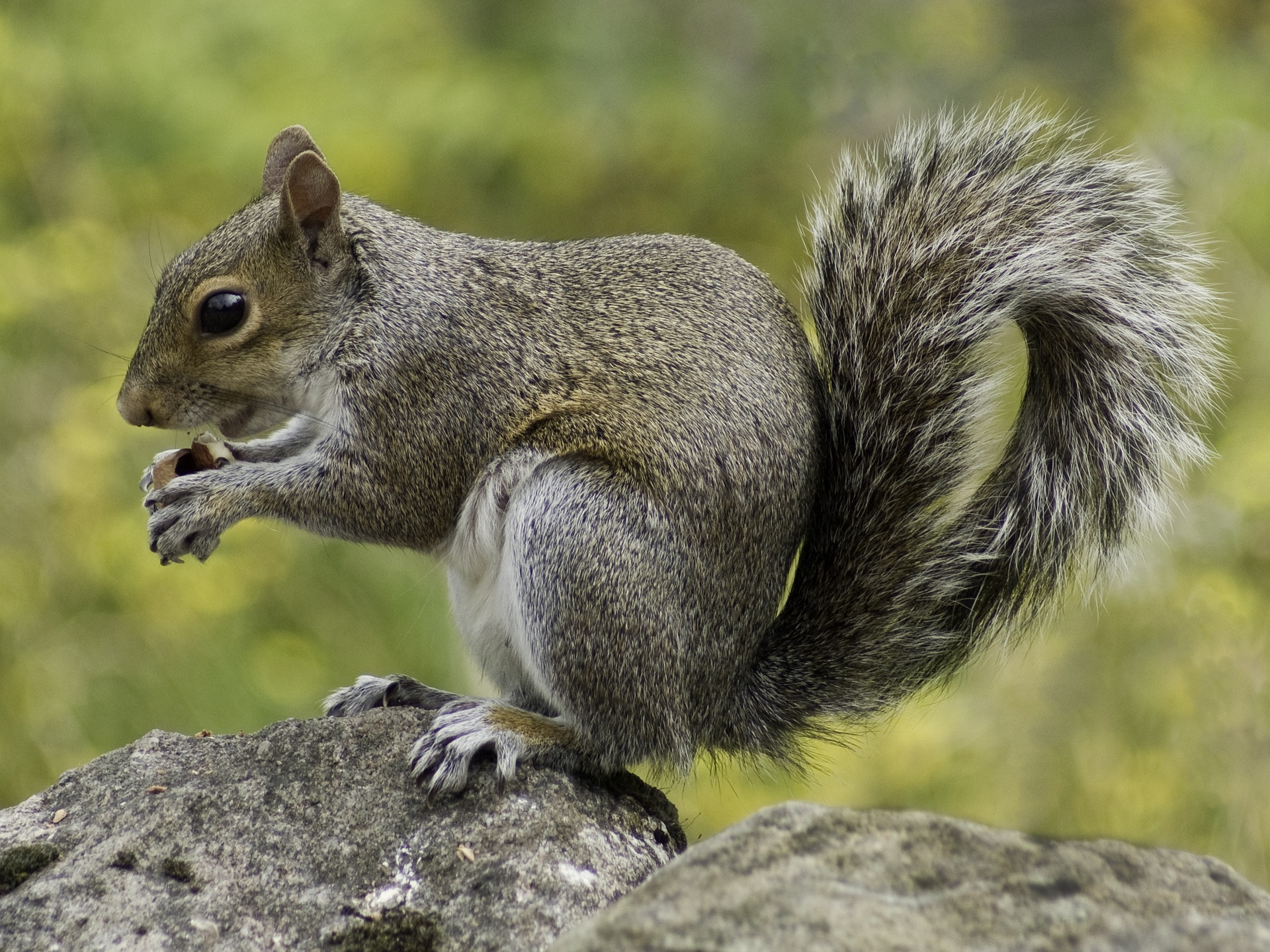 Identifying Rodents: 10 Types Commonly Found in New Jersey
Identifying Rodents: 10 Types Commonly Found in New Jersey
Several types of rodents can commonly be found throughout New Jersey, with some posing a bigger danger to your health and belongings than others. We’ll look at the 10 most common rodents, their identifiers, and the risk they pose to your home and family.
1. House Mouse
The common house mouse is one of the most prevalent rodent species in New Jersey, easily identifiable by its small 3 to 4-inch long body, 1 to 2-inch long naked tail, large ears, and dusty-brown color. These compact rodents can generally be found nesting in walls or other tight spaces near a food supply, coming out nightly to feed.
While not aggressive, house mice can spread disease and illness. Additionally, they can cause damage to your home by contaminating insulation with urine and feces or chewing through electrical wires, PVC pipes, and other building materials.
2. White-Footed Mouse
Like the common house mouse, the white-footed mouse is a small, relatively shy rodent. White-footed mice, also known as wood mice, aren’t quite as common in urban areas, though they’ve been known to take shelter in the ground-level walls of buildings.
This species is identifiable by its ~3.5-inch long body, brown fur, white underbelly, and feet. Like the house mouse, the white-footed mouse is a vector for disease and can cause similar damage to structures, especially if infestations are allowed to grow.
3. Deer Mice
Deer mice are an overall larger species than the other mice on this list, though not as large as common rats. They generally possess dark brown bodies, white underbellies, and large ears. While they tend to avoid humans, they’re commonly viewed as one of the primary carriers of the Hantavirus–a disease that, while harmless to rodents, can cause serious illness and even death in humans.
For this reason, deer mice infestations should be eradicated as soon as possible.
4. Roof Rats
These large, invasive rodents are traditionally found in tropical regions, though it’s not uncommon for them to be found near New Jersey ports after hitching a ride on traveling ships. Roof rats, also known as “ship rats,” are the same species responsible for spreading the bubonic plague, an illness still in existence today. They’re typically characterized by their 7 to 9-inch long bodies, extremely long tails, black fur, white underbellies, and large eyes/ears.
In addition to spreading illness, these large rodents can have devastating effects on food storage due to their large size, insatiable appetite, and taste for fruits, vegetables, and nuts.
5. Norway Rats
Arguably the most common rodent in the United States, the Norway rat is a voracious pest, easily identifiable by its 7 to 10-inch long body, relatively short tail, brown or gray fur, white underbelly, and small ears. Norway rats, also known as “barn rats,” “sewer rats,” or “brown rats,” are also known carriers of disease, making them a threat to you, your family, and your pets.
6. Voles
Voles are the smallest rodent on the list, measuring only 2 to 3 inches in length. While voles rarely enter homes, they’re known to wreak havoc on gardens and plant life. Voles are also vectors for disease, though due to their lack of human contact, they are generally only viewed as a nuisance pest.
7. Squirrels
The most common type of squirrel found in New Jersey is the Eastern gray squirrel, a large, tree-dwelling squirrel. They are easily identifiable by their gray/brown color, white underbelly, and relatively large size.
Like other rodents, squirrels can cause damage to building materials like plastic pipes and electrical wires. They're also known to spread similar diseases; as such, it’s important to keep your distance from squirrels in the wild.
8. Lemmings
While not as common as the other rodents on this list, lemmings are known to inhabit regions of New Jersey. These small, black, and tan rodents are known for their random population swells and declines, with populations booming to excess in some years and dropping to near extinction the next.
These rodents are omnivorous, causing significant damage to gardens and crops if given a chance. Like other rodents, they’re also capable of spreading disease, though they’re not likely to get close enough to humans or structures to cause any issues.
9. Chipmunks
The Eastern Chipmunk is another common rodent in the Northeast, primarily inhabiting wooded areas. These solitary rodents are identifiable by their small, squirrel-like appearance, tan bodies, and black/white striped markings traveling from their heads to their tails.
Chipmunks tend to spend their time in caves rather than homes, though they have been observed chewing wires and extracting insulation from walls to build nests. Additionally, their burrows can create an eyesore for those with unkept yards displacing dirt mounds as they build their elaborate tunnels.
Chipmunks are known to carry a variety of diseases and as such, can pose a threat to your pets and family.
10. Muskrats
Quite possibly the oddest rodent on the list is the muskrat–a large, semi-aquatic rodent identifiable by its medium to dark brown fur, short, thick coat, and a long, semi-flattened, scaly tail.
These rodents threaten young vegetation and river bank erosion due to their affinity for aquatic plants and the large burrows they build. Like other rodents, muskrats can carry disease, though you aren't likely to find one in your home!
Rodent Prevention
Due to the potential for structural damage and the high probability of disease, it’s important to keep your home as rodent-free as possible. Unlike a bed bug infestation that can be treated chemically, rodents require you to eliminate food sources and seal off entry points to maintain a rodent-free environment.
Several methods exist to prevent infestations which, if followed to a tee, should help to keep these fuzzy little vermin out of your house.
Keep a Clean Home
Rodents invade homes with a bountiful supply of food and multiple hiding places, allowing their presence to go undetected while they scavenge your pantry. As such, making your home as uninhabitable for rats as possible is important.
So clear any debris and do your best to keep food scraps and other garbage to a minimum.
Seal Food Sources
Rodents are scavengers, always in search of the next meal. If your pantry is loaded with easy-to-access boxes, open containers, and stored veggies/fruit, there’s a good chance rodents may find them. Instead of leaving food exposed, do your best to pack away dry goods in durable containers for safe storage.
Likewise, keep all garbage sealed to keep animals out of your trash, including rodents.
Identify and Close-Off Potential Entry Points
If your home is infested with rodents, it’s important to pinpoint where and how they’re getting in. Inspect your home for potential holes in exterior walls, torn screens, improperly sealed crawl spaces and attic vents, and even loose-fitting siding around pipes. Rats and mice can fit through even the most seemingly insignificant spaces, so be generous with the caulking!
If all else fails, don’t hesitate to contact your qualified, local pest control experts below. Anchor Pest Control understands the difficulties of eradicating rodents better than anyone. With a slew of available treatment options and plans, your home will be rodent-free in no time.
5 Invasive Bugs to Watch Out For in New Jersey
A pest infestation, from bed bugs to rodents, can cause massive damage to your home and well-being.
However, invasive pests like the Spotted Lanternfly and Japanese Beetle can destroy local foliage, disrupt local ecosystems, and lead to the extinction of local plant life and bugs.
Fortunately, modern technology has allowed us to track invasive species and devise preventative measures to help slow their spread.
In the following article, we’ll take a look at New Jersey’s five most problematic non-native insect species, identifying their physical appearance, common behavior, reasons for being on this list, and what you can do to keep their populations to a minimum.
1. Spotted Lanternfly
The spotted lantern fly is likely a name you’ve heard before due in part to its unique, polka-dotted appearance and the devastating impact the species has on local, ecologically, and economically important plant varieties.
Native to parts of Asia, including China, Vietnam, and India, this plant-hopping pest uses its sharp, straw-like mouth parts to consume the bark and sap of nearly 70 plant species, causing serious health issues. Spotted lantern flies also produce honeydew that attracts pollinators that encourage mold and fungus growth.
These insects are easily recognizable by their medium-large 1-inch size, black bodies, transparent gray forewings, black spots, and bright red hind wings. Their egg sacs are typically flat, white masses that can be found on the side of trees.
Due to their devastating effect on agriculture, such as grape vines, fruit trees, black maples, walnut trees, and the tree of heaven, the New Jersey Department of Agriculture recommends destroying any insects or egg sacs that you may find by any means possible. Regularly inspect outdoor furniture, playground equipment, tools, and kids' toys for egg sacks, and squish them, bag them, or spray them; but whatever you do, don’t leave them alone!
Ever since their first sighting in approximately 2012, spotted lantern fly populations in New Jersey have skyrocketed; though, with the help of dedicated pest services and citizens, we can help to keep the state SLF-free!
2. Japanese Beetle
As their name suggests, Japanese beetles are an invasive pest hailing from Japan. First discovered in New Jersey in 1916, these arthropod invaders have disastrously affected New Jersey’s leafy-green vegetation.
For instance, Japanese beetles tend to devour dry, leafy foliage, leaving behind only the veins for a unique, skeletal appearance. This pest also tends to feed in large quantities, forming swarms of insects that consume any green plant without prejudice.
For this reason, local governments recommend preventative control and home treatments to keep Japanese beetle damage to a minimum.
You can recognize Japanese Beetles by their iridescent green and copper colors and medium size, growing to approximately ½ inch. Pest control consists of localized pesticides such as neem and physical removal. Additionally, deceased beetles make an excellent repellent; placing containers of recently removed beetle carcasses near desirable plants will likely ward off future feedings.
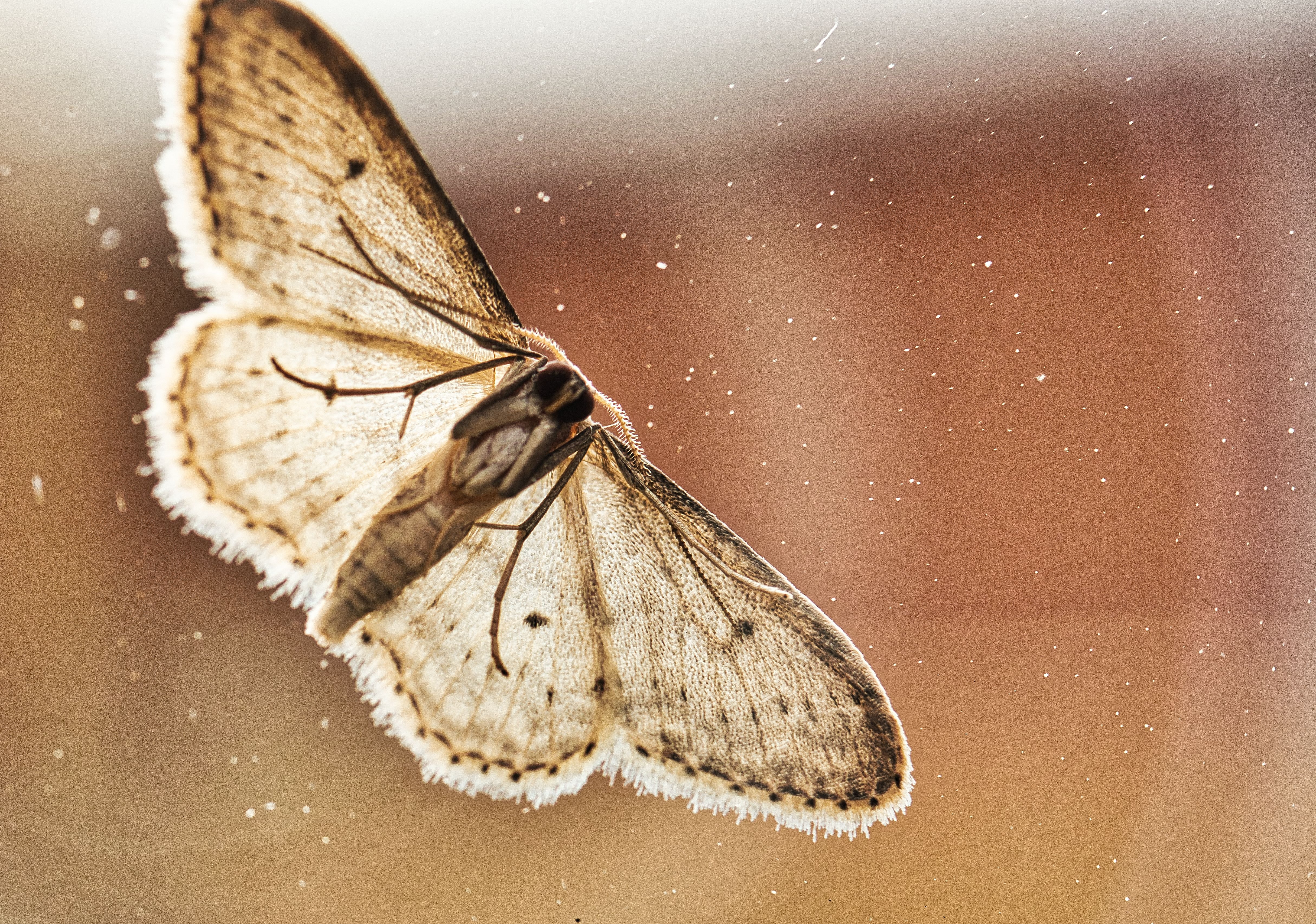 3. Gypsy Moth
3. Gypsy Moth
The gypsy moth is often considered one of New Jersey’s oldest invasive species, originally brought and released into the United States in 1868. This highly-destructive moth is responsible for damage to over 1 million acres of foliage, primarily feasting on hardwood trees. As a result, the New Jersey Department of Agriculture has dedicated funds and resources to eradicating the pest, though they’re still present in some capacity to this day.
Gypsy Moths are especially notable in their caterpillar stage, featuring distinctive hair-like setae across their bodies as well as blue/brick-red spots. In adult form, these moths feature either brown or white bodies, with males being considerably smaller than females (20-24mm and 30-35mm, respectively). Females also feature thin antennae, while males sport long, feather-like antennae.
Eradication is typically taken care of by governmental insecticide usage. However, if you spot a caterpillar, an adult moth, or their fuzzy egg-sacs, it’s recommended to dispose of them.
4. Asian Longhorned Beetle
Originally native to China and the Korean Peninsula, the Asian Longhorned Beetle is an extremely ruinous wood-boring insect, causing serious tree damage in 3 to 4 years and tree death in approximately 10 to 15. These large, destructive beetles burrow into tree bark to lay eggs, which then hatch and burrow deeper into the tree’s soft tissue, where it feeds for approximately two weeks. After this time, the beetle burrows deep into the tree’s woody tissue, where it develops into adulthood, emerging from a ¾-inch wide hole to mate and continue the cycle.
Asian longhorned beetles are distinct in appearance, featuring large 1.5-inch long black bodies with long banded antennae and several white spots. Their grubs are white in color and typically not observed due to their life cycle within the tree.
Unfortunately, the only tried and true method of eradicating Asian longhorn beetles is to cut down and destroy infected trees, preventing the beetles from infesting the surrounding forestry.
5. Emerald Ash Borer
Finally, we have a voracious beetle known for eviscerating the Ash tree population in the NorthEast. These invasive insects are thought to have been brought from their native Asian countries–including Japan, China, Korea, and Russia–hitching a ride on wooden packing materials. Since their introduction to the states, they’ve done considerable damage to Ash trees, prompting widespread removals and diligent observation.
Emerald ash borers are a jewel beetle, easily identified by their iridescent green bodies and small, ~8.5-mm length. In North America, they often feature a reddish upper abdomen below their traditional green wings.
Unlike Asian longhorn beetle infestations, emerald ash borer-infested trees can often recover from infestations by injecting a pesticide into the tree's base, just above the soil line. The insecticide then travels naturally up through the tree trunk, where its ingestion kills larvae. The treatment is typically 85 to 95% effective.
Non-native, invasive pests can pose a massive threat to the ecology and economy of New Jersey; however, with your assistance and the help of ecologists and local tri-state exterminators, we can help to keep these troublesome insects out of the Garden State. If you happen to spot any of the aforementioned bugs, don’t hesitate to whip out the bug spray or get out your best stomping shoes!
If you’re having an issue with serious infestations, don’t hesitate to reach out to your qualified local pest experts below for tips, advice, or a rundown on our timely and effective services.
Ultimate Guide to Termite Treatment in NJ: Costs to Options
Termites are responsible for over $30 billion of damage to homes and crops annually in the US. For the average homeowner, repairing the damages caused by a termite infestation could cost thousands of dollars.
While paying for an exterminator may be the last expense you had in mind, a termite inspection in New Jersey could end up saving you significant money.
Before booking a treatment, however, it’s important to understand the average cost of termite treatments in your area and any factors influencing their price.
This article will cover everything you need to know about termite treatment, including its average cost, how companies factor their final prices and all treatment options.
How Much Does Termite Treatment Cost?
There’s no set number for the price of a termite treatment; however, the average national cost ranges between $300 to $1,000 dollars.
Several factors contribute to the difference in price, such as the extent of the infestation, the type of termites, the type of treatment required, and the square footage and construction type of the home.
While termite treatment is not the least costly service offered, your home is often covered against reinfestation for a year or more afterward.
Additionally, Anchor Pest Control prides itself on no hidden fees or costly inspections. In fact, free, personalized quotes are always available online, and most inspections are completely free, giving homeowners the peace of mind of a clear assessment of the extent of their termite infestation.
Types of Termite Treatment and Cost
Termite treatments can vary significantly from home to home, with several factors necessitating different attack plans. Anchor Pest offers several types of treatments depending on the homeowner’s particular infestation, as listed below.
Liquid Treatments
These treatments include applying Termiticide, a chemical insecticide, to the foundations of affected homes. These treatments average ~ $3 to $10 per linear foot.
Bait Treatments
Bait boxes filled with insecticide-laced bait are set around the affected area. Termites, like ants, then bring the poisonous bait back to the colony, where it’s ingested by other termites to kill off the colony. Bait treatments are slightly more expensive than liquid and often require multiple visits. On average, bait treatments range between $8 and $12 per linear foot per visit.
Chemical Fumigation/Tenting
In some instances, bait treatments may not be effective depending on the type of termites in NJ you’re dealing with or the colony's size. In this case, insecticide fumigants applied under a tent will eliminate all termites inside a home. Tenting often drives the price up significantly, and prices are compiled per square foot of space rather than per linear foot of the foundation–averaging approximately $1 to $3 per sq/ft.
Heat Tenting
Heat is another effective way of treating large infestations. With these treatments, the entire home is tented and heated until the interior of wood products reaches a temperature of 120 degrees Fahrenheit, for a duration of ~30 minutes. Pricing of heat tenting is around the same price as chemical tenting, approximately $1 to $3 per sq/ft.
Micro Treatment
Micro treatments are generally used when termites are only confined to a small, singular area. Pest experts will devise the best possible course of action and only treat the required space for an average price of $6 to $8 per sq/ft.
Barrier Treatments
On new builds and areas that are prone to infestations, barrier methods are often used to create a physical barrier between termites and your home. Treatment methods vary, but some include using sand or treated wood. Barrier methods tend to be more expensive, averaging $10 to $16 per linear foot; however, routine treatments are generally unnecessary.
Signs of Termites and Termite Damage
There are several warning indicators for termite infestations. However, without knowing where to look, these pesky little invaders may go months or even years unnoticed. With significant damage being dealt with in as little as 2 years, it’s essential to know the tell-tale warning signs of an infestation. The most common symptoms of termite damage may include:
- Mud tubes stretching your home’s foundation
- Excessively noisy or loose floorboards
- Small pin-holes in drywall
- Maze-like markings in wooden boards or furniture
- Hollow-sounding wooden structures
- Droopy drywall/loosening paint
- Stuck doors and windows
If one or more symptoms are present in your home, it’s best to have the property inspected for an active infestation.
Factors That Impact Termite Treatment Cost
Every home is different, and every infestation brings new challenges and treatment methods to overcome them. As a result, no two estimates will be the same, and a 100-percent accurate cost can’t be assumed without a proper inspection.
During an inspection, the following aspects of the infestation will be considered, allowing experts to arrive at the proper treatment cost for your home.
Type of Termites Present
Three primary types of termites are present in the New Jersey area, including Subterranean, Drywood, and Dampwood. Each has its own traits, difficulties during treatment, and associated costs.
Generally, Dampwood termites don’t infest homes due to the lack of moisture content in structures; instead, they prefer to inhabit dead trees and other high-moisture wood. Dampwood infestations are traditionally the least expensive to treat.
Subterranean and Drywood termites are the two species most commonly infesting homes, with Drywood termites typically residing in small colonies and causing damage to hardwood floors and wooden frameworks.
Drywood termites typically cause damage at a slow rate, due to the small colony size compared to Subterranean species. On the other hand, subterranean termites often inhabit large underground colonies with mud tubes connecting the colony to food sources. Due to the sheer size of Subterranean colonies, this type of termite infestation is often viewed as the most damaging, consuming up to 13 oz of wood in a single day.
When it comes to price, Drywood and Subterranean infestations can both be relatively high, though Drywood species are often the most expensive.
Level of Infestation
This one is relatively self-explanatory, but prices of treatment will generally increase as the level of infestation worsens. Small infestations can typically be handled in a single treatment ranging from $250 to $1,200; however, large infestations can increase the price of treatment upwards of $6,500.
Area of Infestation
Depending on the location and ease of accessibility, treatment prices can increase or decrease accordingly. If only a small, easily accessible area, such as a separate garage or shed, is infested, treatment can be as little as $150 to $250. On the other end of the spectrum, large or difficult-to-access areas, such as wood floors or attics, can cost top dollar, ranging anywhere from $300 to $900 for a single area.
Other
Several other factors listed previously can contribute to termite treatment prices, such as the type of treatment required, the frequency of treatments, and the style of construction.
Pros and Cons of Professional and DIY Treatments
Depending on your comfort level and financial situation, you may decide to attempt treatments yourself; however, there are several factors to consider when deciding on DIY treatments over professional help.
Pros
Low-Cost
Cost is a huge factor in any pest service. While the low cost of a DIY service may be appealing, if treatment isn’t effective, it will cost you more in the long run.
Cons
Lack of Professional Inspections
In several instances, it takes a well-trained eye to assess the extent of termite damage and the level of infestation to recommend an effective treatment. Without the proper knowledge of what to look for, there’s a good chance that you’ll miss several affected areas.
Access to Supplies
While you can always head to the hardware store for some basic supplies, several infestations require far more than a pump sprayer and a bottle of insecticide. Most everyday homeowners will have a hard time accessing anything more than common bait and liquid treatments, which likely won’t make a significant dent in rampant, active infestations.
Chemical Exposure
If taking on termite control yourself, proper protection and respect for the chemicals are necessary. You’ll likely have to purchase the proper protective gear and be extremely mindful of keeping pets and small children away from toxic insecticides.
All-in-all, termite infestations are a disturbing find for any homeowner. In most cases, termites pose a serious threat to the structural integrity of your home and shouldn’t be taken lightly. Although professional treatments can be pricey, you’re likely better off reaching out to your New Jersey pest specialists rather than attempting to take matters into your own untrained hands.
Here at Anchor Pest Control, our qualified experts will gladly provide you with a free assessment and quote and a variety of treatment options to ensure a termite-free home for years to come. Contact us below.
Have a Bed Bug Infestation in New Jersey? Here's Your To-Do Guide
It’s no secret that bed bugs are a common problem for residents across New Jersey.
According to a New York Times report, 1 in 5 homeowners have either experienced a bed bug infestation or know someone who has.
While many may cast off bed bugs as problems you’ll encounter at a cheap motel; any home can be vulnerable to bed bug infestations if they’re not careful. In fact, bed bug control for homes is just as common as for hotel pest control.
In the following article, we’ll go over everything you need to know about bed bug infestations in New Jersey, including signs of an infestation, where they come from, how to get rid of them, and preventative measures to keep them from returning!
Signs of a Bed Bug Infestation
When it comes to recognizing an infestation, it’s important to know precisely where to look and what to look for.
Bed bugs are, for lack of a better word, shy; they’re also only active in the evening, often enabling infestations to go unnoticed for weeks before they’re discovered.
Unfortunately, infestations can increase rapidly during their time on your mattress or couch, making for an increasingly difficult treatment.
For this reason, it’s best to do a thorough inspection the second you suspect the presence of bed bugs.
There are several signs to look out for if you suspect an infestation, including:
- Bites: Bed bugs are hematophagous insects, meaning they can only survive on the blood of warm-blooded mammals. Like any other blood-consuming pest, bed bugs leave notable wounds from their straw-like beaks, used to withdraw blood. While bed bug bites may resemble mosquito or flea bites, they’re often found in clusters or lines due to a singular insect making multiple punctures as it travels across the skin.
- Blood Stains: Like mosquitos, bed bugs inject you with an anticoagulant before feeding, allowing the blood to flow easier. However, the blood-thinning agent will also result in slower clotting once the bed bug is done feeding, often leaving blood stains on sheets, pillows, or mattresses.
- Adult Bugs and Eggs: Generally, bed bugs will lie dormant close to their feeding grounds (i.e., as close to you as possible). As a result, these insects will often hide in the folds of mattresses, between box springs, foam toppers, or in the crevices of bed frames. One of the most certain signs you have a bed bug infestation is the sight of actual live bed bugs or eggs.
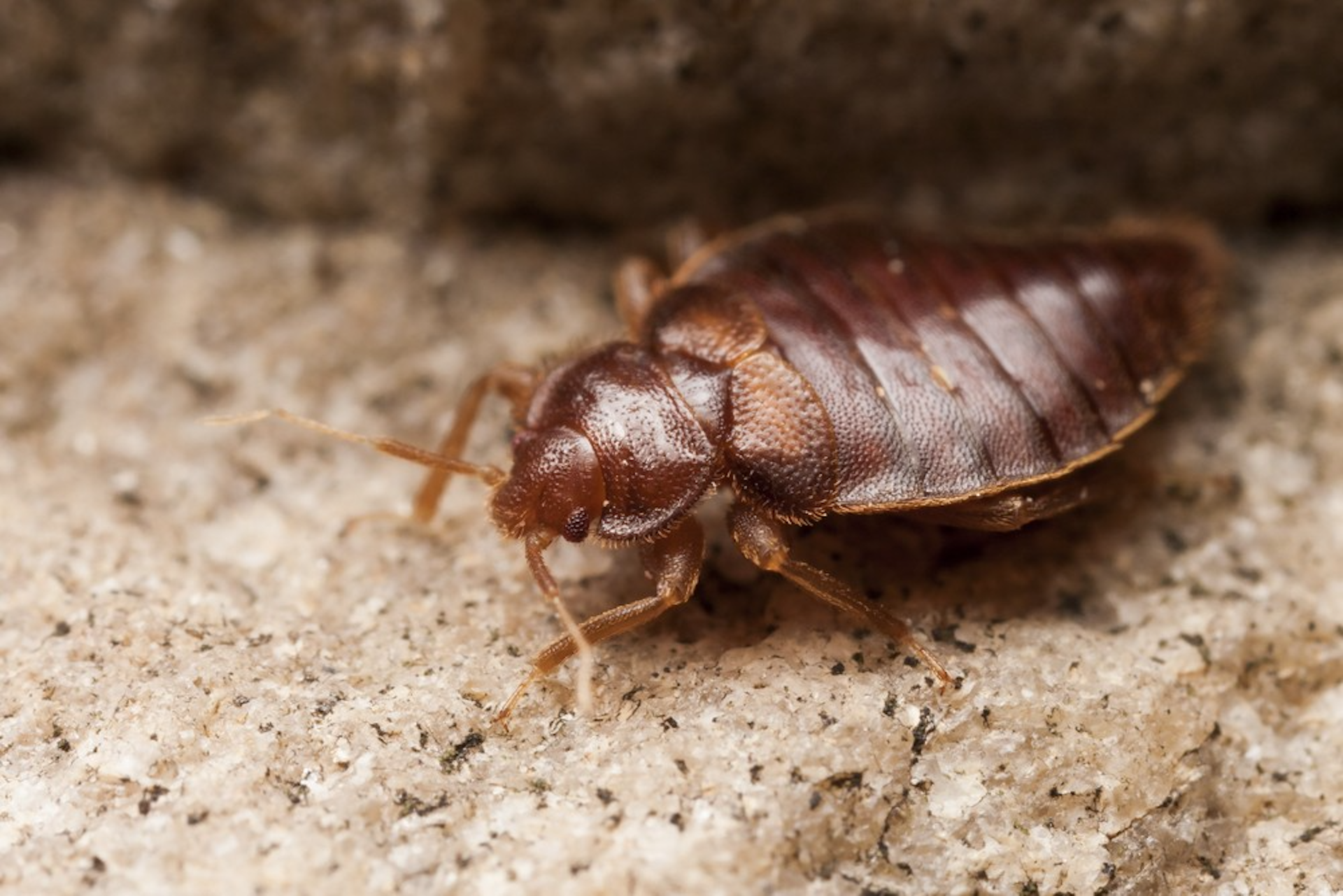 Are Bed Bugs Dangerous?
Are Bed Bugs Dangerous?
Technically, no. Bed bugs aren’t known to harbor disease or cause any medical issues besides infections or injury due to excessive scratching. Besides irritation, lost sleep, and associated anxieties, bed bugs are relatively harmless.
Where Do Bed Bugs Come From?
Generally, bed bugs are transported via infested items like luggage from an infected hotel, clothing from an infected home, or any unclean second-hand goods like furniture, books, blankets, etc. You could even bring them home after a trip in an infected cab or a seat in an infected movie theater!
Bed bugs are also relatively small and flat–like apple seeds–allowing them to climb through cracks and gaps in apartment complexes’ walls, floors, and ceilings. For this reason, bed bug infestations are most commonly reported in high-population areas.
Where are Bed Bugs Most Common in New Jersey?
While no dwelling is immune to an infestation, bed bugs are primarily found in highly-populated metropolitan areas. Hotels, motels, and apartment complexes are prime locations for bed bug infestations to take hold, if for no other reason than the sheer volume of people coming and going.
4 Steps to Get Rid of Infestations
1. Identify the Infestation
Conduct a thorough walkthrough of the premises and assess which rooms, areas, or pieces of furniture are infected. By following the infestation guidelines in the previous section, you should know exactly what to look for.
2. Prep the Area for Treatment
Before treatment begins, it’s important to follow these basic steps to ensure reinfestation doesn’t occur.
Reduce Clutter
Bed bugs can hide in even the smallest cracks and crevices, allowing some insects to escape your initial extermination efforts. Before beginning treatment, remove all items from the floor, clear away cardboard boxes, toss unwanted newspapers and books, and place all garbage directly into plastic bags. Make sure not to move any items from an infested room into an uninfested area to prevent spreading.
Clean Remaining Items
It’s important that nothing in an infested room goes untouched. Items should be thoroughly cleaned and treated; if items are too large or difficult to clean/treat, it’s recommended to place them into airtight containers or bags for upwards of a year to ensure that any remaining bugs or eggs are killed.
Eliminate Habitats
Bed bugs are excellent at going unnoticed, hiding away in the smallest cracks and crevices until it’s time to feed. As such, it’s important to eliminate potential hiding places like loose outlets, hanging pictures, peeling wallpaper, and gaps in baseboards. So seal all gaps using a suitable latex caulk to reduce potential hiding places. Wallpaper paste can also be used to reattach loose wallpaper, and outlet covers can prevent insects from crawling into electrical outlets.
3. Apply a Homemade or Professional Treatment
Several homemade treatments can be effective against bed bugs.
Non-Chemical Treatments
Heat
On hot enough days, throwing infested items into a tightly-tied plastic bag and leaving it out in the hot sun can cook bugs and eggs. Steamers are also effective when set to 130 degrees or higher.
Cold
Freezing bed bugs can also be a productive treatment, although temperatures must reach 0 degrees or below to be deemed effective. Unfortunately, this is a range that most home refrigerators and freezers cannot reach.
Chemical Treatments
Chemical treatment should generally be left to professionals. However, several EPA-approved options can be purchased through most hardware stores. Items such as foggers, desiccants, and diatomaceous earth can be safe and effective if used correctly.
Professional Assistance
If treating an infestation yourself is too overwhelming, you can always contact ya trusted pest expert for bed bug treatment.
4. Preventing Reinfestation
The best way to treat an infestation is to prevent it in the first place. Consider these preventative maintenance measures to keep your home free of bed bugs.
- Clean up all clutter and vacuum floors regularly.
- Wash all sheets and linens regularly.
- Be weary when using shared laundry facilities.
- Inspect yourself and your luggage after travel–even if it’s in a cab.
- Use bag stands at hotels.
- Inspect hotel beds when traveling.
- Inspect any used furniture or clothing before purchasing.
- Use 365 pest control services to prevent pests, such as bed bugs, year round.
No prevention method is foolproof, but these will help you spot an infestation before they require professional assistance.
While many people rightfully fear bed bugs, infestations can easily be prevented early on. Following simple preventative measures and understanding the signs can significantly reduce the risk of introducing these little blood-suckers into your home.
If all else fails, contact your local pest experts below for a quote. We know that bugs can be overwhelming, so don’t hesitate to pick up the phone and inquire about our wide range of treatment options and home protection plans to keep your household pest-free.
Anchor in The Press

Have you seen Anchor in the news lately? Check us out on the web:
NJ.com - Frequently Asked Questions about Bed Bugs
YouTube - Anchor on TV
YouTube - Anchor on TV Again
Did winter mean the end of the Stink Bug?

In the winter, freezing conditions can freeze stink bugs to death. Does this mean that they are all gone? Not likely.
In laboratory tests, stink bugs create a natural anti-freeze that helps to keep the water in their bodies from crystallizing and killing them. The biggest difference is that in the lab tests, the bugs aren’t frozen for months the way that the weather has been recently.
Nonetheless, not all of the stink bugs will die. They like to hide under shingles, in attics and in walls. For at least some of them that will be enough to keep them alive and able to procreate. And procreating is something that stink bugs do very well.
Virginia Tech. entomology professor Thomas Kuhar tested the winter theory by gathering up stink bugs and putting them into 5-gallon buckets. Over the course of a winter, 95% of the bugs died. The buckets were filled with foam insulation and keep under a shelter for the season. The bugs create cryoprotectants, antifreeze proteins, help to keep the bugs bodily fluids from crystallizing. Proteins similar to these can be found in arctic creatures that survive the even longer, even colder winter in extreme climates. Ninety-five percent might seem like a lot but it only takes a couple of bugs to make a whole colony in no time.
The only real solution to keeping stink bugs away from the home is to choose a good exterminator who will find the bus where they hide and keep them away. Anchor Pest Control will use the latest scientific solutions to keep stink bugs away, all without negatively affecting the family and pets in the area.
The Great Bed Bug Caper – How to Find the Elusive Little Bugs

In the case of “Are the Bed Bugs There?,” professional ‘bug sleuths’ have a few tools.
VISUAL INSPECTION
The first tool is a brilliant detective mind. A trained professional can find insects, even when they well hidden.
A professional will look at beds, furniture, curtains, cracks and many more places. But it’s not just the pros who can look. The customer can learn to find the signs of bugs, particularly bed bugs, and be able to keep up the vigilance for themselves.
Sometimes a pro will set up regular visits or random visits to look for bed bugs after a first infestation. That will allow them to monitor subsequent outbreaks if they occur.
An exterminator can also put out bug monitors. There are ones with attractants that will being the bugs to the trap. Others will give the bugs a place to hide, then they get trapped. The exterminator will then come back and check the traps.
DNA TESTING
The second tool is DNA testing. This is the easiest and best way to prove a business’s responsibility in a bed bug infestation. It can take 24 to 48 hours and is 99.7 percent effective.The DNA test allows a consumer to prove that a particular ‘family’ of bugs.
K9 BED BUG CONTROL
The last tool has four legs and a great nose. Canine detection is 98% reliable. The best part is that the dog can find bugs that even a professional can’t see. It’s an extremely effective way to look for bugs. A well-trained dog is an amazing pal for an exterminator to be able find bugs extremely quickly. Of course, the dog is able to smell bugs long before they can be seen.
All of these tools are only effective and will solve problem in the hands of an expert. A well-trained and well-informed exterminator can turn these tools in powerful weapons against bugs. We are prepared to offer any of these services, finding our K9 Bed Bug Control to be the most effective. Do you think you have bed bugs? Call us today for an appointment!
Bed Bug Heat Treatment - How to Make Bed Bugs a Thing of the Past

We know that bed bugs absolutely can’t stand the heat, especially when the house that they have moved into is treated by Anchor Pest Control. It’s called Thermal Remediation Treatment. It is one of the most effective ways to treat a bed bug problem when you have the proper equipment. The trained staff at Anchor can help!
The process takes about a day, but leaves the home bed bug free. There is no damage to the house and we don’t need to use lots of noxious chemicals. Because it is just heat, it takes no time to recover from.
Your home will be sealed up with plastic and covered appropriately to make sure that the heat stays in. Anything that might be damaged by temperatures about 120 degrees is removed.
Our team of professionals then use our specialized equipment to heat your home up. Using fans, the entire space if heated evenly, ensuring that all of the little beasts in your home will be eliminated.
At temperatures over 120°, all stages of the bed bugs’ life, from egg to adult, can be killed by the heat. The process is completely safe, odor free and can be completed in a single day. The process requires a lot less preparation than conventional treatments and requires much less recovery time.
Whether it’s a small home or a full size commercial building, we can make the removable of bed bugs much easier and most effective with our Thermal Remediation Treatment.
Regulatory Compliance Requires Training Throughout

We were featured in Pest World Magazine! Click here to check out the article on their web site.


